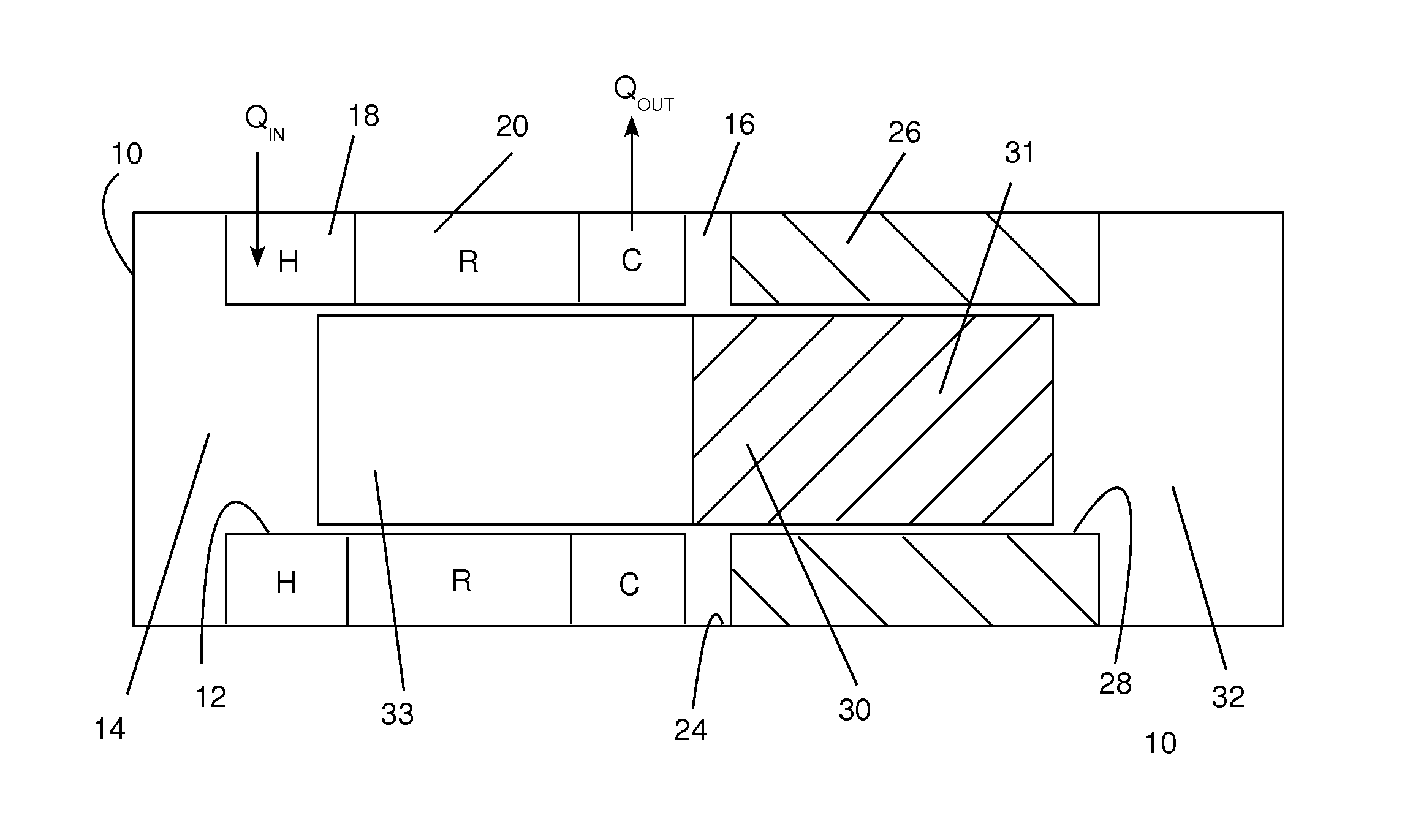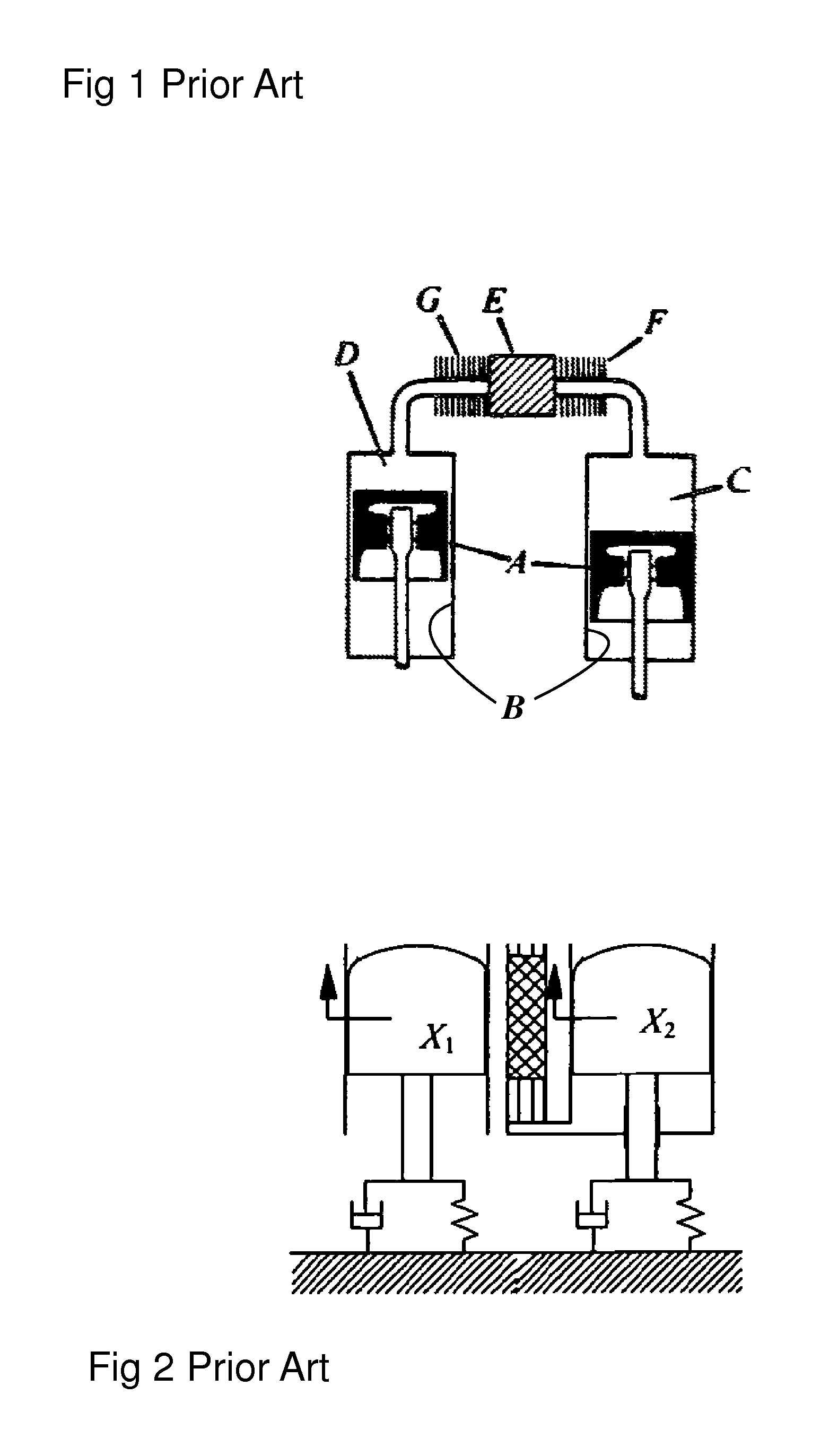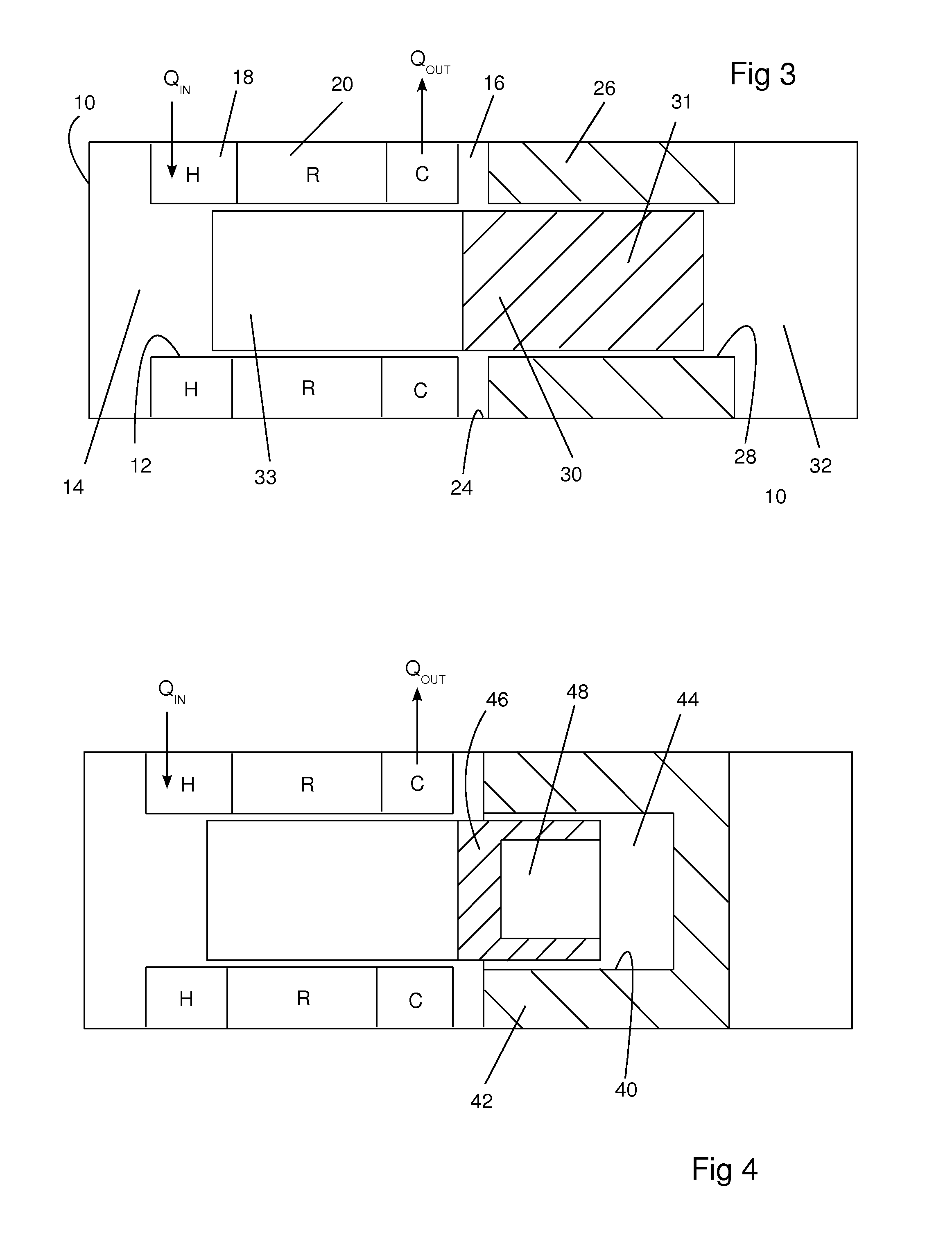Two piston, concentric cylinder, alpha free piston Stirling machine
a free-piston, stirling machine technology, applied in the direction of stirling type engines, machines/engines, hot gas positive displacement engine plants, etc., can solve the problems of inability to house the multiple cylinders of the alpha machine in a single casing, the 180° degree phasing of the pistons is thermodynamically inoperable, and the two-piston alpha stirling machine has not been possible before, so as to achieve efficient operation.
- Summary
- Abstract
- Description
- Claims
- Application Information
AI Technical Summary
Benefits of technology
Problems solved by technology
Method used
Image
Examples
Embodiment Construction
[0034]The figures are simplified diagrammatic views in order to illustrate the principles of the invention. Component parts are shown symbolically or schematically in the manner common in the art. Piston clearances are exaggerated in order to distinguish the closely fitting components. In several of the views the connection of the pistons to a prime mover or load are not illustrated because many such connections are known in the art and may be used with embodiments of the invention.
[0035]FIG. 3 illustrates a free piston, alpha, two piston, concentric cylinder, Stirling cycle machine having a casing 10 confining a working gas. A first cylinder 12 (which may also be called the expansion cylinder) has an expansion space 14 that opens into one end of the first cylinder 12 and a compression space 16 at the opposite end of the first cylinder 12. The first cylinder 12 is surrounded, in a manner that is well known in the free piston Stirling machine art, by an expansion space heat exchanger...
PUM
 Login to View More
Login to View More Abstract
Description
Claims
Application Information
 Login to View More
Login to View More - R&D
- Intellectual Property
- Life Sciences
- Materials
- Tech Scout
- Unparalleled Data Quality
- Higher Quality Content
- 60% Fewer Hallucinations
Browse by: Latest US Patents, China's latest patents, Technical Efficacy Thesaurus, Application Domain, Technology Topic, Popular Technical Reports.
© 2025 PatSnap. All rights reserved.Legal|Privacy policy|Modern Slavery Act Transparency Statement|Sitemap|About US| Contact US: help@patsnap.com



